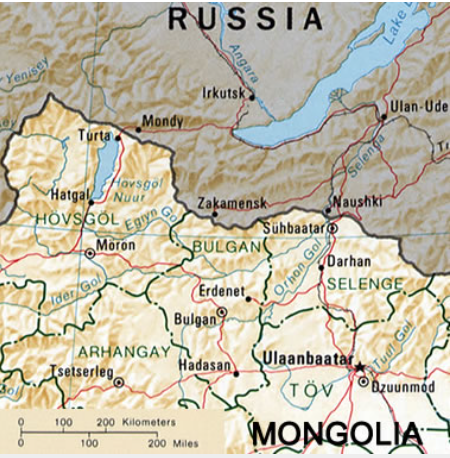色楞格河三角洲

色楞格河在哪里?
色楞格河(常被称为色楞格(Selenge)河)是亚洲的一条主要河流,发源于蒙古国北部的伊德尔河与德尔格尔河交汇处。它向东北方向流经蒙古国和俄罗斯,并在世界最大、最深的淡水湖——贝加尔湖的东南岸形成了一个大型三角洲。其支流包括:额吉河、吉达河、鄂尔浑河、哈努伊河、奇科伊河、希洛克河和乌达河。色楞格河是贝加尔湖的主要水源,其支流流域面积约占贝加尔湖流域面积的80%。
色楞格河流入贝加尔湖的平均流量在冬季为100立方米/秒,春季融雪期则高达1,700立方米/秒。
水资源利用活动
色楞格河的水资源被用于农业灌溉、社区供水、工业、采矿、娱乐、旅游和交通运输等多个方面。这些用途中的许多都会降低水质、限制下游可用水量,并对生态环境造成影响。蒙古国和俄罗斯正共同努力管理色楞格河,以改善水质并维持水资源可持续利用。
在蒙古国,大量水资源被用于灌溉小麦和其他谷物田地。在俄罗斯的三角洲附近,已建成运河网络用于灌溉农田。通过放大本页的卫星图像,可以清晰地看到这些运河。
色楞格河三角洲卫星图像:2010年8月23日获取的色楞格河三角洲Landsat 5卫星图像。该三角洲位于贝加尔湖东南岸。图像清晰地显示了三角洲的分流河道、冲积平原上的蜿蜒河道以及三角洲前沿的含沙水域。该Landsat GeoCover图像由美国地质调查局提供。

色楞格河三角洲
当色楞格河接近贝加尔湖时,它会流经一片广阔的冲积平原,在此处河流流速减缓,开始沉积泥沙,并形成蜿蜒的河道。上文的Landsat卫星图像展示了辫状河道、河道截弯取直形成的牛轭湖以及废弃河道。该河流向贝加尔湖中沉积了巨量的泥沙,形成了宽度超过25英里(40公里)的大型扇形三角洲。
该三角洲被众多分流河道切割,这些河道两侧有天然堤坝,将大片的沼泽地分隔开来。
在三角洲前方,由再搬运的泥沙形成了沉积沙洲(通过放大下方的积雪覆盖卫星图像可以清晰看到这些沙洲)。三角洲的扇形形态及其众多呈“鸟足状”的分流河道表明,该三角洲的形态未受到湖泊潮汐和波浪作用的显著影响。
色楞格河三角洲的土地利用
色楞格河三角洲被当地居民广泛用于放牧牲畜、种植干草和谷物、商业捕鱼、设陷阱捕猎、狩猎以及其他休闲活动。这些活动常常侵占濒危动植物的栖息地。
一座水电站——伊尔库茨克水电站,建在安加拉河上,安加拉河是唯一一条从贝加尔湖流出的河流。该水坝调节着河流流量,并导致贝加尔湖水位波动。这些水位变化导致色楞格河三角洲的大部分区域时而被水淹没,时而因水电站的活动而排水。